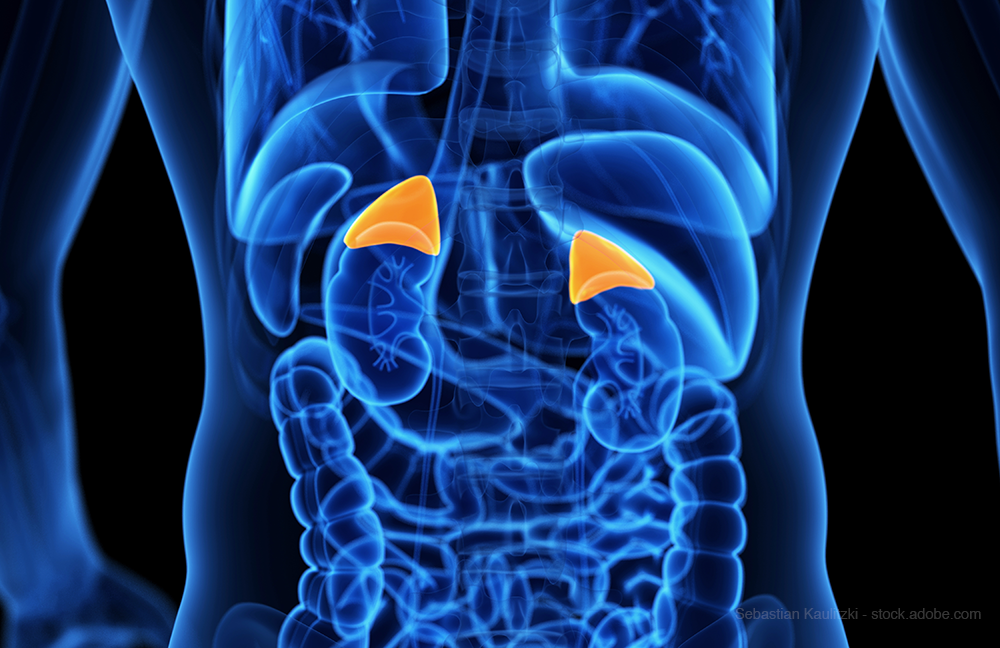Lipid-Metabolism-Related Factors Affect Unenhanced CT Attenuation of Adrenal Adenoma
CT attenuation also affected by BMI and blood cortisol levels.

Unenhanced CT attenuation in adrenal adenoma (AA) can be affected by lipid-metabolism-related factors, according to a study published in the journal European Radiology.
Researchers from Japan sought to determine if lipid metabolism-related factors regulated unenhanced CT attenuation in AA. A total of 36 with surgically proven AAs participated in the study. The underlying diseases in the group were:
- Primary aldosteronism, 24 patients
- Cushing’s syndrome, 8 patients
- Subclinical Cushing’s syndrome, 3 patients
- Non-functioning AA, 1 patient
The researchers measured unenhanced CT attenuation of the AAs and the liver. Pathologically, clear cell ratio (CCR) constituting each AA was qualitatively assessed. The researchers also obtained clinical data including tumor diameter, body mass index (BMI), hemoglobin A1c, triglyceride, total cholesterol, blood cortisol and plasma aldosterone levels were also obtained.
Related article: Fasting Before Contrast-Enhanced CT May Not Be Necessary for Some Patients
The results showed that all patients demonstrated a significant correlation between CT attenuation and each of CCR, BMI and blood cortisol levels. The 24 patients with primary aldosteronism and 1 with non-functioning AA also showed a significant correlation between CT attenuation and CCR or BMI.
The researchers concluded that lipid-metabolism-related factors including BMI and blood cortisol levels can affect unenhanced CT attenuation of AA in addition to pathological factors.
GE HealthCare Debuts AI-Powered Cardiac CT Device at ACC Conference
April 1st 2025Featuring enhanced low-dose image quality with motion-free images, the Revolution Vibe CT system reportedly facilitates improved diagnostic clarity for patients with conditions ranging from in-stent restenosis to atrial fibrillation.
The Reading Room: Racial and Ethnic Minorities, Cancer Screenings, and COVID-19
November 3rd 2020In this podcast episode, Dr. Shalom Kalnicki, from Montefiore and Albert Einstein College of Medicine, discusses the disparities minority patients face with cancer screenings and what can be done to increase access during the pandemic.
Can Photon-Counting CT be an Alternative to MRI for Assessing Liver Fat Fraction?
March 21st 2025Photon-counting CT fat fraction evaluation offered a maximum sensitivity of 81 percent for detecting steatosis and had a 91 percent ICC agreement with MRI proton density fat fraction assessment, according to new prospective research.
GE HealthCare Debuts AI-Powered Cardiac CT Device at ACC Conference
April 1st 2025Featuring enhanced low-dose image quality with motion-free images, the Revolution Vibe CT system reportedly facilitates improved diagnostic clarity for patients with conditions ranging from in-stent restenosis to atrial fibrillation.
The Reading Room: Racial and Ethnic Minorities, Cancer Screenings, and COVID-19
November 3rd 2020In this podcast episode, Dr. Shalom Kalnicki, from Montefiore and Albert Einstein College of Medicine, discusses the disparities minority patients face with cancer screenings and what can be done to increase access during the pandemic.
Can Photon-Counting CT be an Alternative to MRI for Assessing Liver Fat Fraction?
March 21st 2025Photon-counting CT fat fraction evaluation offered a maximum sensitivity of 81 percent for detecting steatosis and had a 91 percent ICC agreement with MRI proton density fat fraction assessment, according to new prospective research.
2 Commerce Drive
Cranbury, NJ 08512
All rights reserved.